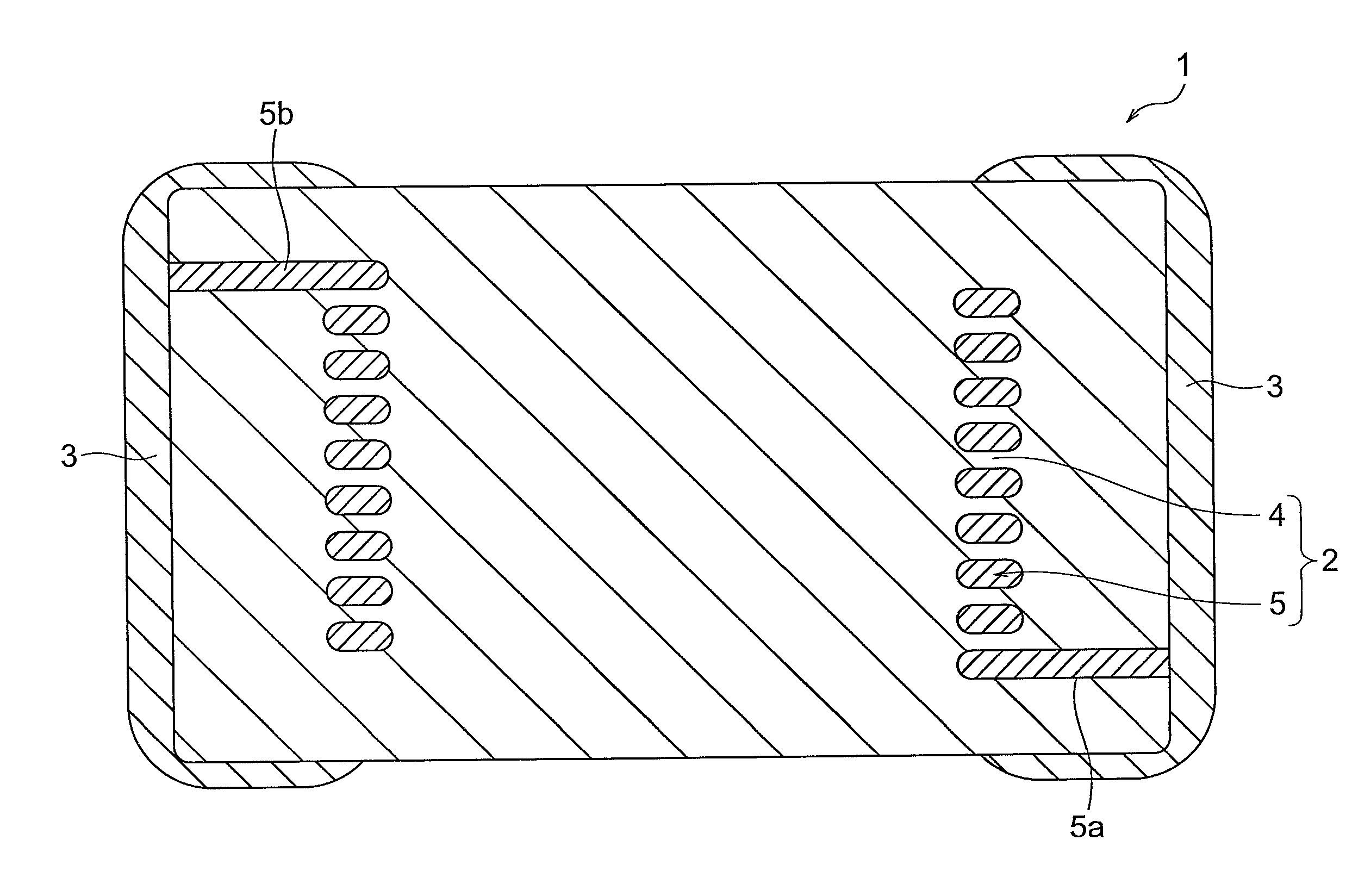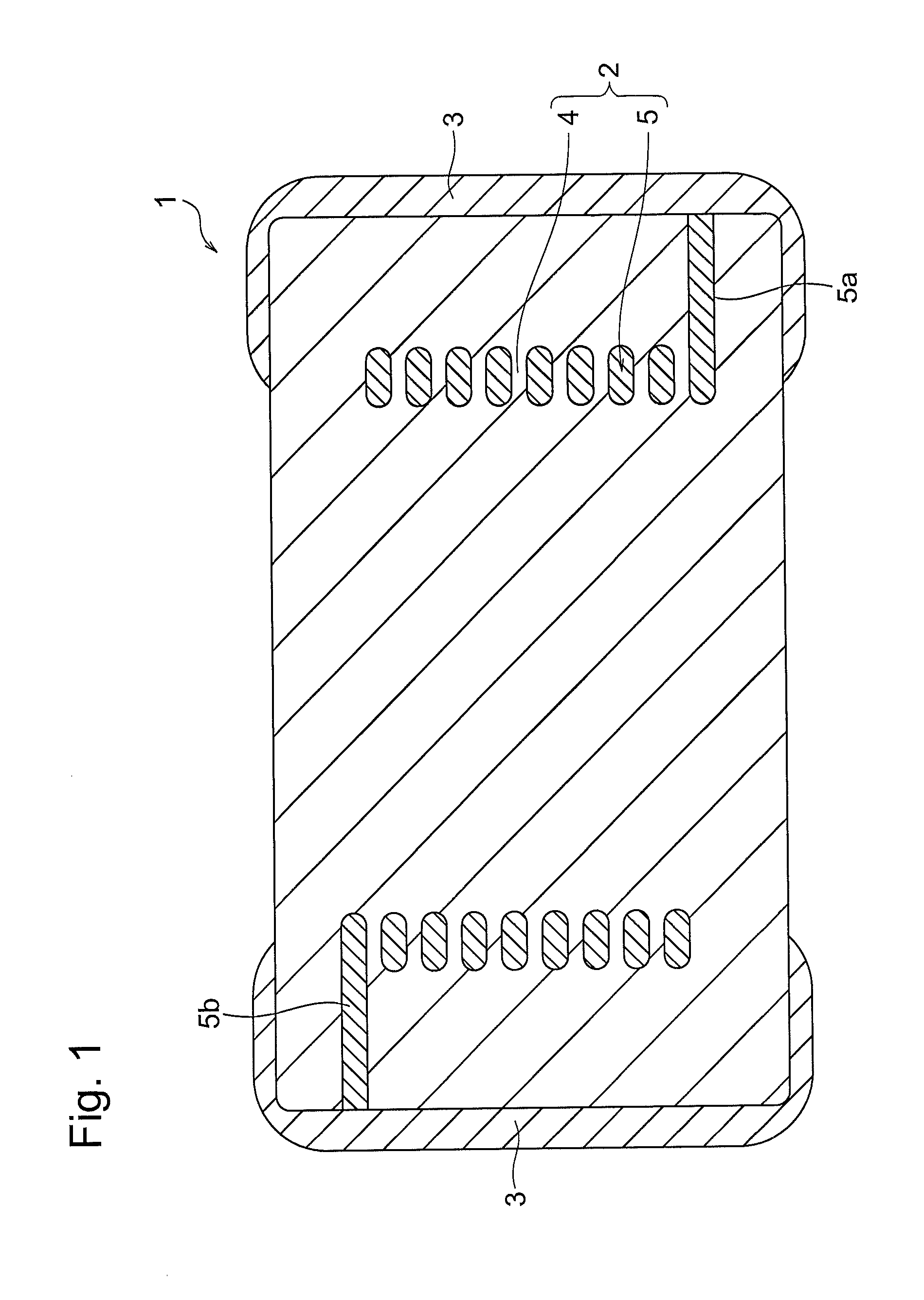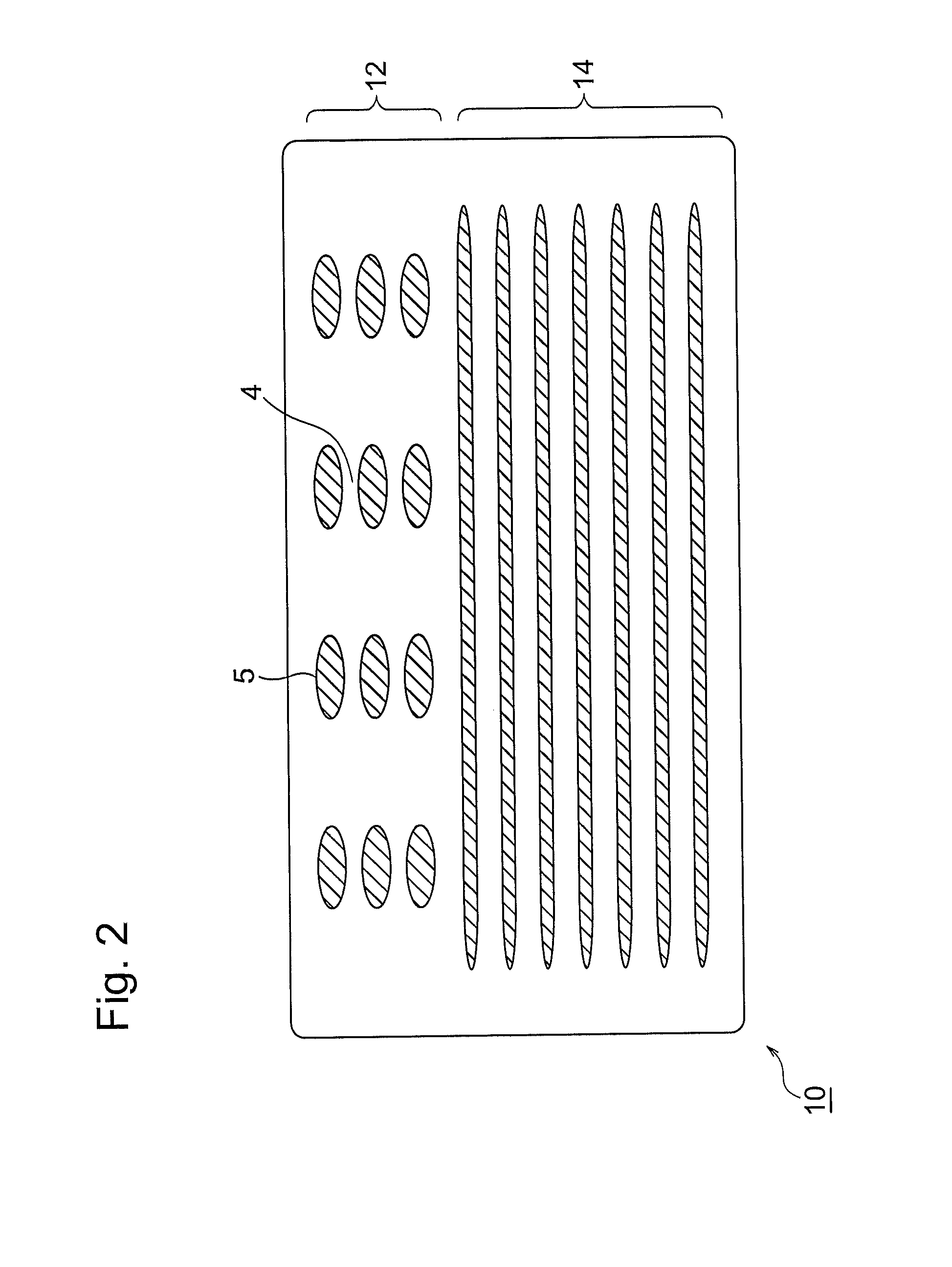Ferrite composition and electronic component
a technology of ferrite and electronic components, applied in the direction of magnetism bodies, cores/yokes, inductances, etc., can solve the problem of 1 not revealing q values under high amplitude, and achieve the effect of small lowering of q
- Summary
- Abstract
- Description
- Claims
- Application Information
AI Technical Summary
Benefits of technology
Problems solved by technology
Method used
Image
Examples
example 1
[0056]First, as materials of the main component, Fe2O3, NiO, CuO, and ZuO (when zinc oxide was included) were prepared. As materials of the sub component, SiO2, Bi2O3, and Co3O4 were prepared.
[0057]Next, after powders of the prepared main component and sub component were weighted so that they satisfied the composition described in Tables 1 and 2 as sintered bodies, they were wet mixed for 16 hours in a ball mill, and a raw material mixture was obtained.
[0058]Next, after the obtained raw material mixture was dried, it was calcined for 4 hours at 720° C. in the air, and the calcined powders were obtained. The pulverized powders were obtained by wet pulverizing the calcined powders for 72 hours in a steel ball mill.
[0059]Next, after drying the pulverized powders, granulation was performed by adding 10.0 wt % of a polyvinyl alcohol solution as a binder having 6 wt % concentration into the pulverized powder 100 wt % so as to obtain granules. The granules were molded by pressure so as to ...
example 2
[0067]With respect to sample number 28 of Table 1 and sample numbers 41 to 43 of Table 2, FIG. 5 was obtained by summarizing the results of Q values measured under an external magnetic field (H=20 to 400 A / m) except for H=100 A / m and H=200 A / m. Other factors other than the external magnetic field were measured in the same way as with Example 1. Note that, sample number 41 corresponds to a conventional non-additive material, sample number 42 corresponds to a conventional Co additive material, and sample number 43 corresponds to a conventional SiBi additive material.
[0068]From FIG. 5, it is understood that the SiCoBi additive material according to the present invention has a small lowering rate of Q during rising of the external magnetic field and can keep Q values high under the high magnetic fields of 20 to 400 A / m compared with the conventional non-additive material, Co additive material, and SiBi additive material.
example 3
[0069]With respect to sample number 37 of Table 1, a structural analysis was performed by a method of EDX elemental mapping by using STEM HITACHI Ultra-thin Film Evaluation System HD-2000. The results were shown in FIG. 6A to FIG. 6C. FIG. 6A to FIG. 6C show concentration distributions of Bi, Si, and CO, respectively. The white areas are where concentrations of each of the elements are relatively high.
[0070]As shown in FIG. 6A to FIG. 6C, Si and Bi are segregated to cover ferrite particles in the ferrite materials according to the present invention. On the other hand, Co is comparatively uniformly present in the ferrite materials by dissolving to the ferrite particles in solid.
[0071]The reason why Q values under large amplitude currents of the ferrite materials according to the present invention improve is not clear. However, a synergistic effect where Si and Bi are segregated at the same area and Co is comparatively uniformly present is possibly considered as the reason.
[0072]As th...
PUM
 Login to View More
Login to View More Abstract
Description
Claims
Application Information
 Login to View More
Login to View More - R&D
- Intellectual Property
- Life Sciences
- Materials
- Tech Scout
- Unparalleled Data Quality
- Higher Quality Content
- 60% Fewer Hallucinations
Browse by: Latest US Patents, China's latest patents, Technical Efficacy Thesaurus, Application Domain, Technology Topic, Popular Technical Reports.
© 2025 PatSnap. All rights reserved.Legal|Privacy policy|Modern Slavery Act Transparency Statement|Sitemap|About US| Contact US: help@patsnap.com



